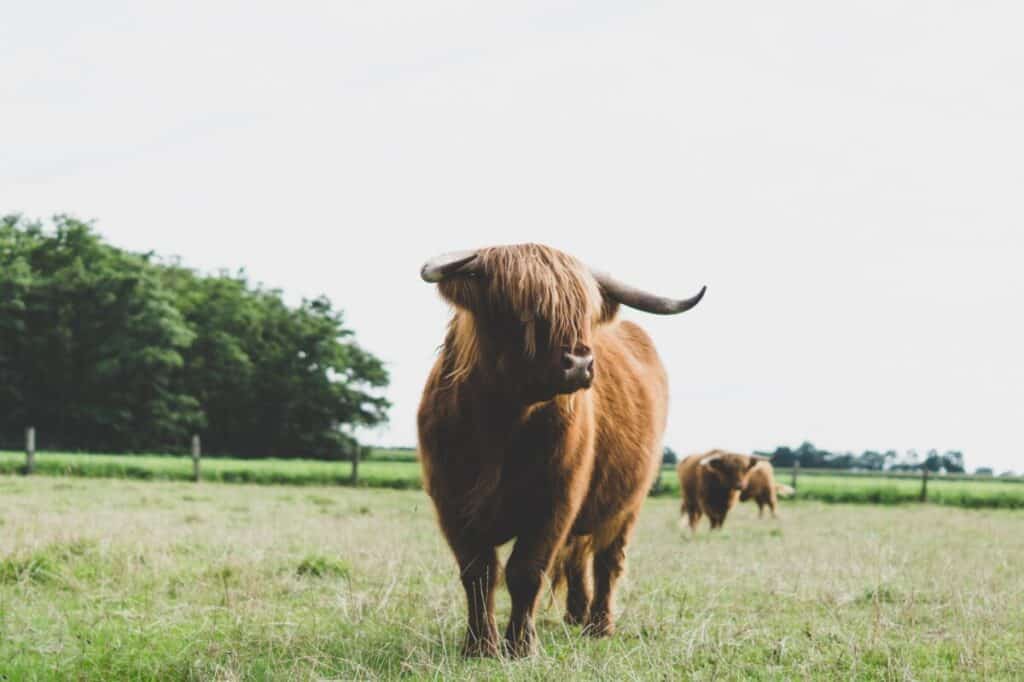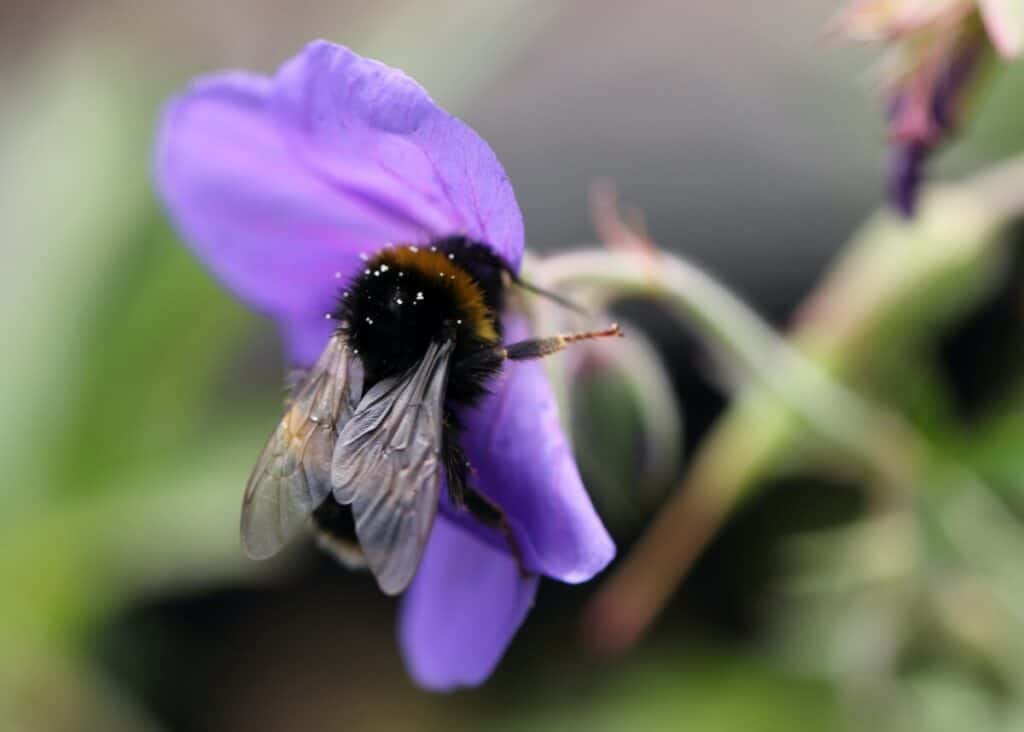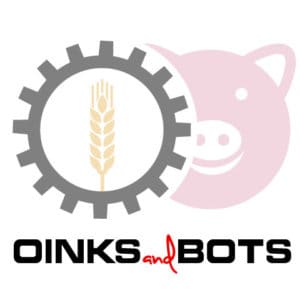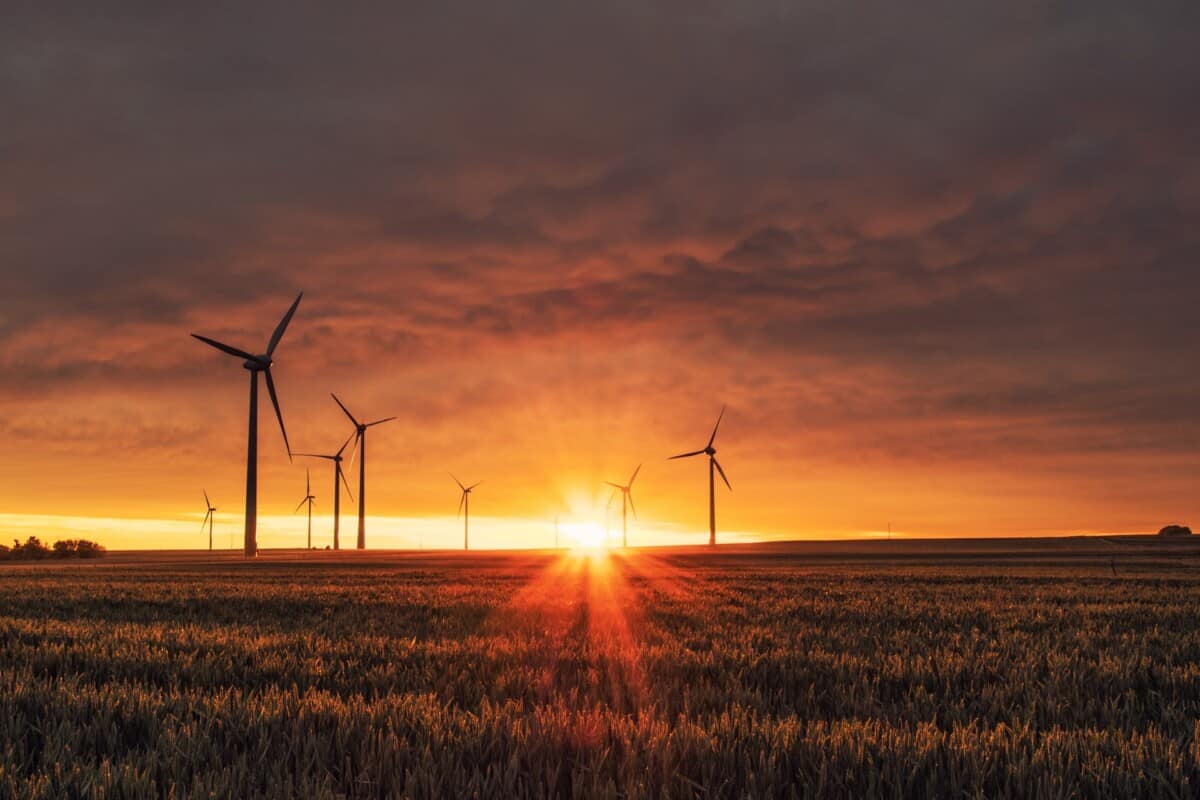Farming technology has changed dramatically in recent decades. Data has played a big part in this transformation – giving farmers a holistic view of their business that allows them to work faster, smarter, and cost-efficiently.
These technological leaps forward include GPS-guided drones, the ‘connected cow’ (yes, that’s actually a thing), and real-time monitoring. That’s not all, though.
So, without further fanfare, here’s a quick step through modern farming technology and what it means for farmers, their customers, and end-consumers too.
Age Of The Connected Cow
Bizarre as this might sound, it’s not something taken from the pages of a far-fetched science fiction novel. We’ve discussed this strange phrase before in my other article in 5 exciting technologies changing farming right now. Managing livestock is a complicated and serious business. Farmers need to monitor, feed, and care for their animals, which can be a time-consuming process.
Sensors can now be attached to cattle and other livestock, allowing farmers to monitor their activity. The data supplied provides information about how animals interact with one another and the state of their health. This is being trialed at the moment in places like Waikato and could be an exciting look into the development of livestock farming.
This genomic data provides a comprehensive overview that allows farmers to understand:
- Whether any genetic risks exist that could affect the longevity of an individual animal – or, indeed, the wider herd
- How best to help their livestock flourish and make their enterprise more profitable
- What strategies could be introduced to improve breeding in the longer-term
Monitoring Livestock & Crops In Real-Time
It’s no secret that the global population is growing. This is putting greater pressure on farms to grow produce and breed livestock at a faster pace – but without compromising on the quality of the end-product. Many farmers are looking at the possibility of amalgamating farms. In our own local area the age of farmers is over 50 years of age and the future of many farms is uncertain.
One solution is to combine farms and so not only does this mean farms are more productive but it also makes it much more attractive to other business owners. A 500 acre farm is a lot more productive than a 60 acre farm and it can be a safer investment for business owners and this will lead to stability in the sector.
Scaling on its own isn’t enough. As an operation grows, it’s important to put in place processes designed to track and trace workers to communicate effectively. That way, complete visibility across a wide-ranging area is achievable. If there are time sensitive events, as there would be around breeding and birthing season for many animals, knowing where your workforce is and being able to direct resources as needed can dramatically increase productivity.
This makes business sense. Real-time monitoring, when correctly enacted, will improve efficiency and protect profit margins.
Real-time technology – Four big benefits
- Build better maintenance schedules. By fitting GPS technology to farm vehicles or equipment, you can build more efficient maintenance plans and put a stop to unproductive and expensive waste idling. This will become more important to farmers as the inevitable green wave hits farms as CO2 emissions will be recorded and lightly taxed based on that.
- Protection of vehicles and machinery. Determining where expensive assets like tractors and equipment are is essential. That way, you can work out if they’re in a safe location – or whether there’s a real risk of theft or storm damage.
- Retain visibility of workers using telematics. Knowing where labourers are and what they’re doing is important, as it can show how efficient they’re being. For example, could they follow a more efficient route to use their time more effectively?
- Observing production on your farm. For example being able to watch out for animal behaviour that would otherwise lead to decreasing productivity, for example fighting. Or potentially watching crops for disease that could affect the amount of crops you can harvest.

Drones Aren’t a New Thing in Farming
These days, drones are commonplace. But, in fact, they’ve been in commercial use since the 1980s. Previously referred to as Unmanned Aerial Vehicles, these clever machines have only recently (literally and metaphorically) begun to fly.
Why only now?
A change in regulations and industry funding has given drones a new lease of life. Drones are used in plenty of farming activities and have huge potential in the near future.
Soil and field analysis
Until recently, farmers have relied on satellites to do this job. Largely, their endeavors have been unsuccessful. Poor image quality, coupled with high costs have hampered their efforts to get the right data.
Drones have overcome this seemingly insurmountable obstacle. The data they deliver is accurate, crisp, and provides farmers with the insight they need to adjust their processes and become more efficient.
Not only can drones provide visual aid to you but as they become more advance and sophisticated, they can sample and test soil and water. This can allow you a peace of mind, knowing that your livestock and crops are being kept healthy and safe for human consumption.
Drones can:
- Highlight a potentially damaging fungal or bacterial problem early, allowing farmers to take preventative action sooner rather than later.
- Deliver concise images of a crop multispectrally, providing a snapshot of its condition that shows how well it has matured over time.
Used this way, drones can:
- Provide multi-spectral images of a crop that can then be reviewed to determine its health and maturity across time
- Expediently identify a fungal or bacterial problem early, allowing early action to be taken – saving time, stress, and money
- Isolate and tranquilise animals who are needed to be inspected for suspected illness or malaise.
- An option for farmers to herd their far flung herds on larger farms by utitlising drones.
Agricultural irrigation
Water is a precious commodity. Without it, farmers couldn’t run their businesses. That’s why they’re keen to prevent wastage caused by inefficient or broken systems – which isn’t just environmentally unfriendly but expensive too.
Infrared technology fitted to drones overcomes this issue. It allows areas exhibiting ‘hydric stress’ to be rapidly identified. These images can then be used by farmers to prioritise tracts of lands with water supply deficiencies.
More sophisticated drones can look into the moisture content of your soil. This is not only useful for making sure that your soil remains suitable for its current use but also gives you an idea of what any future uses could be. Very useful if you’re looking at expanding your farm!

Blockchain Is Transforming Farming
Blockwhat? If you’ve not heard this term before, you’re not alone. Think of Blockchain as a series of uneditable records that allows a product to be traced from farm to fork (and so also, vice versa).
In this new retail landscape inhabited by curious and discerning consumers, Blockchain is an essential tool for any person or business working within a supply chain.
Though very much a new concept within farming, it is a technology that is used extensively within fintech industries and often used to track stock markets. It may seem a little mental to apply stock market analytics or techniques to farming (could you get any further apart?) but as said before, consumers are becoming more savvy in what they consume.
One such way of assuring your customers that you are above board is to use technology like blockchain to ensure that your supply chain is clean. And providing that peace of mind that if something were to go wrong, that the problem would be solved in real time as opposed to days or weeks delay in response, increasing the chances of people getting sick.
A holistic view of a product’s lifecycle
Records that form part of a blockchain can’t be changed. This means the data is reliable, as opposed to a paper record – which could be tampered with. As a result, retailers know they can depend on the information presented to them.
Let’s presuppose that there’s a contamination scandal – or an outbreak of e-coli. A retailer could use Blockchain technology to audit its supply chains and isolate the point of origin – allowing the responsible party to take decisive action.
In a case like this, both retailer and farmer would save time, money, and earn kudos points with the consumers they serve. Blockchain also adds to your marketability. Since documents coded with Blockchain cannot be tampered with, you can guarantee the quality of your products to customers.
Using a smartphone, consumers can use Blockchain to find out:
- Whether pesticides were used on their product – and, if so, the type of chemical and its manufacturer
- Small but important details, such as the labourers who grew or delivered the produce
- The date the product was grown, where and by whom
Gaining a competitive edge
Blockchain is fast becoming the norm. In the longer-term, technically literate farmers who understand how it works will overtake competitors who fail to keep up or prefer to do things the old fashioned way.
Given a choice, retailers will prefer to work with farms capable of reacting to – and solving problems – quickly. That way, they can protect their costs and deliver better end-service to their customers.

Greenhouses Are Fast Becoming Industry Powerhouses
Greenhouses are no longer mediocre-sized facilities sequestered away in the countryside. These days, they are modern tech-savvy businesses of scale that exist on the periphery of the suburban areas which they serve. No longer content to play second fiddle to large corporations, they actively compete with big businesses.
LED Technology
This technology artificially lengthens the number of daytime hours, giving plants more time to grow. A phased sun-up/sun-down setting simultaneously provides much-needed regeneration time. LED lighting also speeds up harvest cycles, meaning greenhouses are no longer limited by the seasons.
Biopesticides: An overview
On a simple level, biopesticides function to protect crops that find their basis in plant extracts, micro-organisms, and a range of other organic compounds. They are especially effective at managing pest problems. If you’ve ever had an antibiotic you’ve used elements of biopesticides on yourself!
Why do we need biopesticides?
Agriculture continues to be an important sector that’s growing and continually evolving. But crops continue to be attacked by a range of pests that wreak economic havoc on farms throughout the globe. This is especially important as usually the best producing crops and livestock have weaker immune systems since they tend to be more inbred.
These pests typically fall into one of the following categories: fungi, bacteria, insects, viruses, and nematodes. Chemical pesticides are used to protect crops from the harmful effects of these pests. However, the downside is that these methods can also cause harm to microorganisms – and, also, the wider environment. And there is a growing movement in the public of concern against inorganic chemicals being put into our food.
Enter biopesticides: an eco-friendly, biodegradable, and effective alternative to harmful chemical pesticides.
In recent years:
- chemical pesticide manufacturing has dropped by as much as 2% per year;
- biopesticide production has increased at an incredible annual rate of 20%.
It’s clear to see that the tide is turning against chemical pesticides. But that’s not to say that biopesticides offer a one-size-fits-all solution that farmers and growers can depend on.
Arguments For And Against Biopesticides
There are two schools of thought within the farming community, with some being in favour of biopesticides – and others who are skeptical or dead against it.
Pros Of Using Biopesticides
- The fact that they present very little risk to our health, due to a reduced presence of toxic residue
- Some of the more advanced biopesticides are capable of reproduction, which means that can replicate in proximity to the perceived threat – be it a disease or pest
- Pests are less likely to develop resistance to biopesticides – making them suitable for long-term use
- They can be used on a supplementary basis and can even be combined with biological agents as part of a comprehensive eradication program
Cons Of Using Biopesticides
- Farmers need a greater level of technical knowledge to use them properly and achieve their desired outcomes
- Compared to more conventional methods, the rate of control is slower – and so is the overall efficacy
- Environmental conditions can adversely affect how well a biopesticide works
Three types of biopesticides
Biopesticides need to be arranged into an array of categories, each of which has its own unique set of characteristics and attributes.
Microbial biopesticides
These are actual living organisms that are pathogenic in nature and which are a popular choice for growers or farmers who want to control pests. They are formed from either natural or genetically-modified algae, fungi, viruses, or bacteria.
Their modus operandi for controlling pests is to create poisonous toxins that latch on to targets. This has the effect of establishing microorganisms that essentially compete with pests, concomitantly causing diseases.
They call into one of three classifications: biofungicides, viral pesticides, and bacterial biopesticides.
Bacterial biopesticides
One of the more common types of microbial pesticides, this type is often used to tackle a range of known plant diseases. They can also be used to control and prevent insects and diseases.
In terms of how biopesticides kill insects, they enter the digestive system, whereupon they create harmful endotoxins specific to the organism penetrated. A range of bacteria are used – but perhaps one of the most common is Bacillus Thuringienses (of which there are approximately 40,000 variations).
Viral pesticides
This is often used to control those pests that attach cotton, rice, and vegetables. One the pest in question has ingested the harmful particles in the viral pesticide, they activate and get to work.
The effect of these viral particles activating is that they break down the host’s ability to digest food – causing it to lose strength, which ultimately leads to death.
Good Idea Or Bad Idea
Taking into account the pros and cons of organic farming, its true to say that chemical pesticides bring with them an array of unwanted environmental effects – including pollution of soil, crops, water, and other ecological imbalances. Even those natural enemies that kill pests have been destroyed by chemical pesticides.
If feeding future generations without harming the eco-systems that support the production of healthy crops, it’s important to look to less harmful, more effective – and, ultimately, sustainable – methods of agriculture. This solution also needs to be economically viable. Organic farming methods, which incorporate the use of biopesticides, could well provide the solution.
However to completely rely on biopesticides would be unfair and unreliable. In healthy ecosystems, there is a finely tuned balance and most biological pesticides will have evolved to not wipe out their food sources (the pests we’re trying to get rid of) and so some amount of engineering will be needed.
However other methods will be needed to compliment biological pesticides. This will likely be a combination of improving immune systems of crops and livestock among other methods.

Other technological innovations
- People. Farmers need tech-savvy people with digital skills to help them modernise. That’s why there’s been a big recruitment drive recently to bring in young blood who can educate them as to which tools to use – and, just as importantly, how to use them.
- Precision Monitoring. Farmers must, on a frequent basis, order fresh supplies to remain operationally efficient and economically viable. Precision monitoring allows them to anticipate when stock will run low – so they can act before a given resource runs out. Automating your supply chains will free up more time.
- Hybrid Crops. Various forms of hybrid crops exist, which offer various advantages over traditional crops. You can now buy a hybrid form of corn that works more effectively with nitrogen than normal corn. This allows more grain to be produced than with a standard variety. Becoming more resistant to diseases and droughts are another area of interest.
- Management Systems. Without a proper management system in place, a farmer will struggle to track their crop conditions, schedule harvests or planting, and, more generally plan their short- and long-term tasks. Farm management processes can be consolidated into a single app – making it easier to plan and set goals (especially if the farmer employs a large workforce). There is a growing need for more efficient operating systems used on farming systems, such as Windows, that will also give regular updates that will not lead to out-dating technology within a handful of years.
- Nitrogen Modeling. Fertiliser generates an immense amount of global revenue globally every year. Gradually, the agricultural method is inching away from single fertilser applications and toward in-season ones that allow them to work on an as-and-when basis.
These are just a few of the emerging technological development transforming the agricultural industry. Of course, nothing stays still in a restless market that places constant demand on farmers, growers – and, indeed, the entire supply chain – to evolve and adapt.
Speaking of which…
Anticipating the Farm of Tomorrow
So, when we connect all the above dots, what sort of picture do we get? Pressure on supply chains to work harder, faster, and smarter grows by the day. This means that today’s tech will need to adapt – or could even become obsolete – over the next few decades.
Adaptation will be key in this ever-evolving marketplace, and many businesses will fall by the wayside in the process.
It’s likely that the remaining farms will homogenise to keep up with demand, reducing the number of businesses vying for a slice of the proverbial pie.
Three things you should expect to see:
- Consolidation will increase due to a large number of farmers reaching retirement age. Family members will choose to merge their enterprise with other farms to protect their interests and remain competitive.
- The use of robotics will become commonplace. Machines can work 24/7 without the need for breaks. This tech could well solve the problem caused by our growing population, which is estimated to hit 9.1bn by 2050.
- Outdoor farms could vanish due to farms over-relying on water and chemicals to grow their produce. There is a viable and growing argument that supports indoor growing environments, which could become the new norm.

